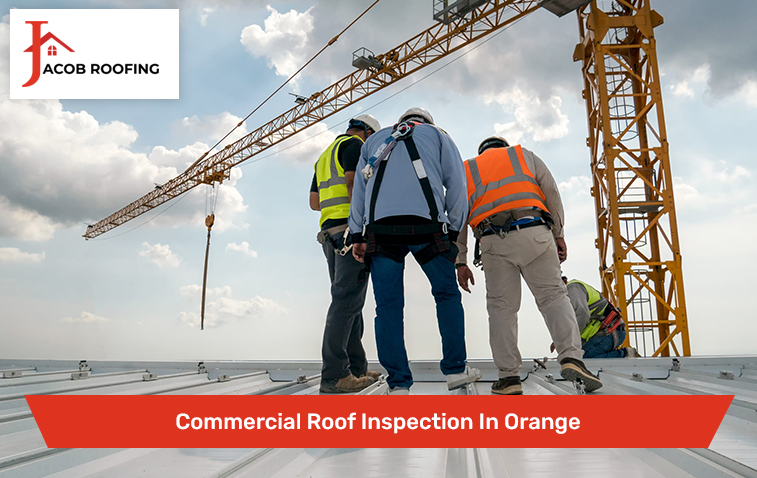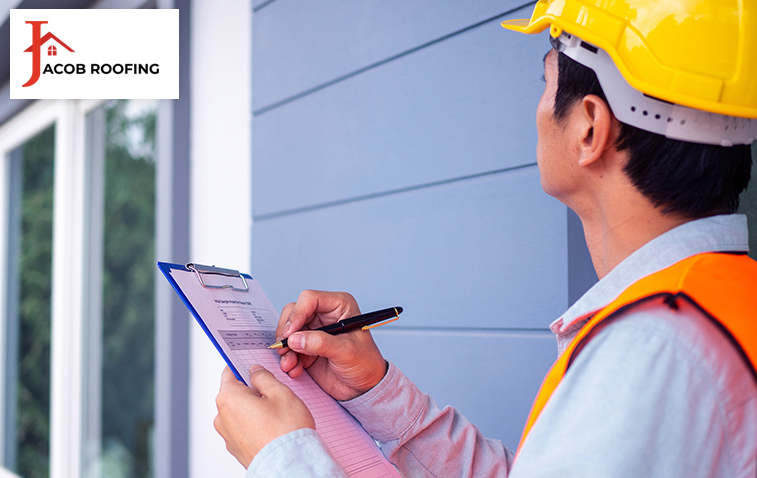How is Commercial Roof Inspection Different Than Residential Inspection?
So, why should you get a specialist for commercial roof inspection in Orange? There are certain critical differences between inspecting the roof of your business and your home

Scale and Complexity
Commercial roofs are typically larger and more complex than residential roofs. They often have multiple levels, different materials, and intricate designs. Commercial roofs may also have additional components such as HVAC systems, skylights, or rooftop equipment, which require specialized attention during inspections
Accessibility
Commercial roofs are often less accessible than residential roofs. They may have restricted entry points or require safety equipment and protocols for inspection personnel. Accessing and navigating commercial roofs safely can be more challenging, requiring trained professionals with the right equipment and certifications.
Usage and Foot Traffic
Commercial buildings are typically occupied by businesses and may experience heavier foot traffic or equipment movement on the roof. This usage can impact the condition of the roof and require additional inspections to assess wear and tear, potential damage, or maintenance needs.
Regulations and Codes
Commercial roofs are subject to specific building codes and regulations that differ from residential structures. Compliance with these codes is essential to ensure the safety and integrity of the roof. Commercial roof inspections often involve verifying adherence to these regulations and identifying any areas of non-compliance.
Maintenance Contracts
Many commercial buildings have maintenance contracts or warranties in place for their roofs. Commercial roof inspections may involve evaluating the performance of these contracts and ensuring that any required maintenance or repairs are being addressed.
The Different Areas of Your Roof that We Help You Inspect
Contact us for conducting a commercial roof inspection in Orange, it is important to inspect various components to assess their condition and identify potential issues. Here are some key parts of a commercial roof that should be inspected:
Roof Membrane
Our team will inspect the roof membrane, such as TPO, EPDM, or modified bitumen, for signs of damage, cracks, tears, or deterioration. The membrane forms the waterproof barrier and protects the underlying layers
Flashings
We will check the flashings around roof penetrations, such as vents, skylights, or HVAC units. Look for gaps, loose or damaged flashings, and inadequate sealing. Flashings prevent water intrusion in vulnerable areas.
Roof Edges and Parapets
We will help you examine the roof edges, including the fascia, coping, and parapet walls. Look for signs of damage, loose materials, or inadequate sealing. These components help protect the roof perimeter from wind uplift and water entry.
Drainage Systems
Next, we will assess the condition of roof drains, scuppers, and gutters. Ensure they are clear of debris and functioning properly to prevent water ponding or improper water runoff.
Roof Insulation
If applicable, we will inspect the insulation material to check for moisture damage, compression, or unevenness. Adequate insulation helps with energy efficiency and prevents heat transfer.
Roof Vents and Equipment
We inspect any roof vents, exhaust fans, or rooftop equipment. Ensure they are securely fastened, sealed, and functioning correctly. Our team will look for any signs of damage, rust, or leaks.
Roof Access Points
At this stage, we inspect access hatches, stairwells, or rooftop entrances for proper sealing and security. These points should be adequately protected to prevent unauthorized access and potential damage to the roof.
Roof Seams and Joints
Next, we need to examine the seams and joints of the roofing system for signs of separation, gaps, or deteriorated sealant. Properly sealed and intact seams are essential for maintaining a watertight roof.
Skylights or Roof Windows
If present, we will inspect skylights or roof windows for cracks, leaks, or damaged seals. Ensure they are properly installed and do not pose any water infiltration risks.
Safety Equipment
Lastly, Jacob Roofing will assess the condition of any safety equipment such as guardrails, fall protection systems, or anchor points. Safety measures would be in place to protect workers during maintenance or repair activities.
The Different Methods We Use

Here’s a table outlining the different methods we commonly use for commercial roof inspection:
| Method | Description |
|---|---|
| Visual Inspection | This method involves a thorough visual examination of the roof surface, components, and surroundings. |
| Infrared Thermography | Infrared cameras are used to detect temperature variations on the roof, identifying potential issues. |
| Core Sampling | A small core sample is extracted from the roof to assess the condition of underlying layers and insulation. |
| Moisture Scanning | Moisture meters or electronic devices are used to detect moisture content within the roof system |
| Non-Destructive Testing | Various techniques like ultrasound, electrical capacitance, or nuclear meters are used to evaluate roof conditions without damaging the roof surface |
